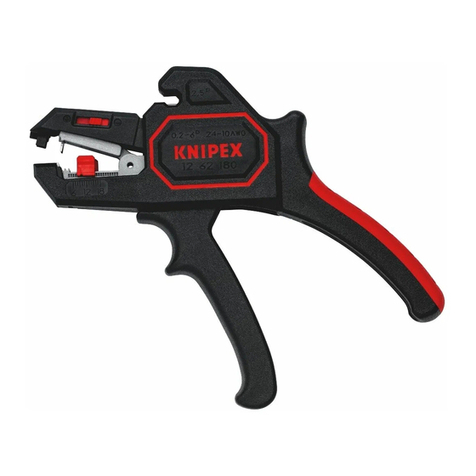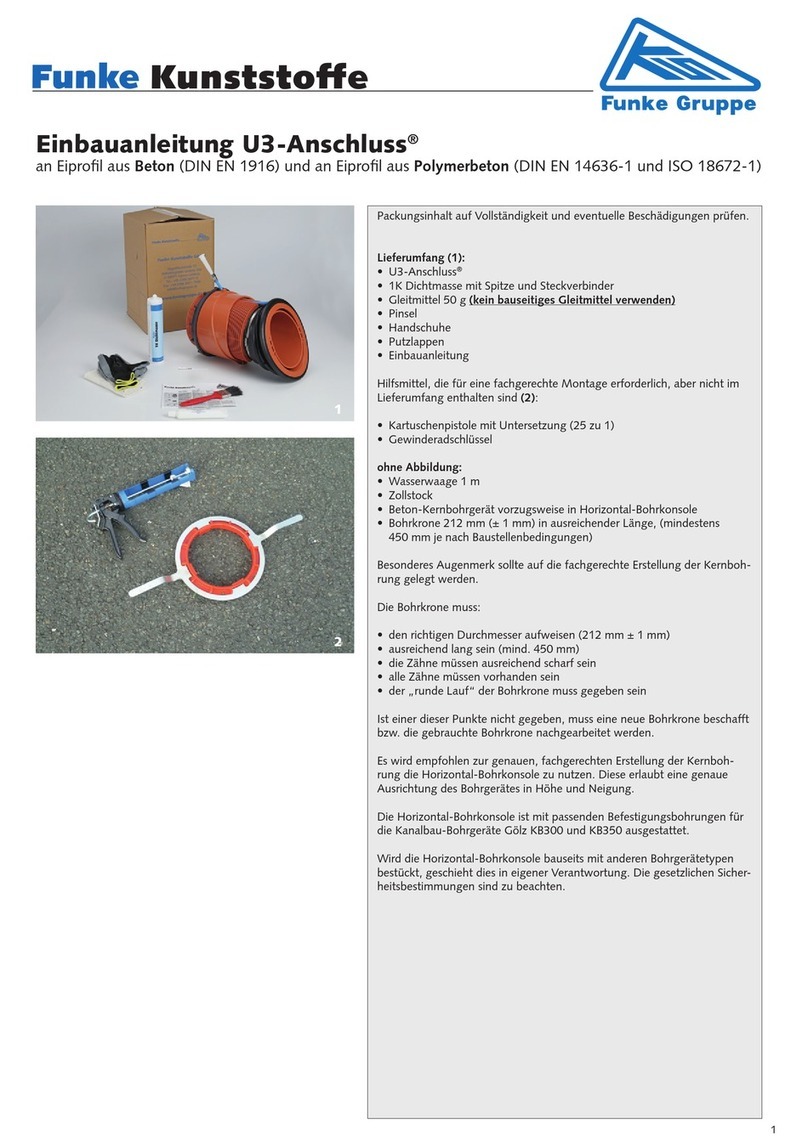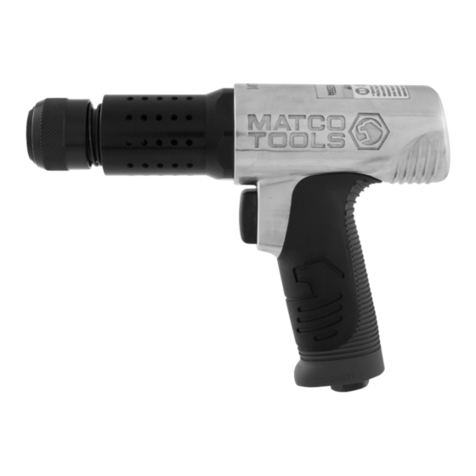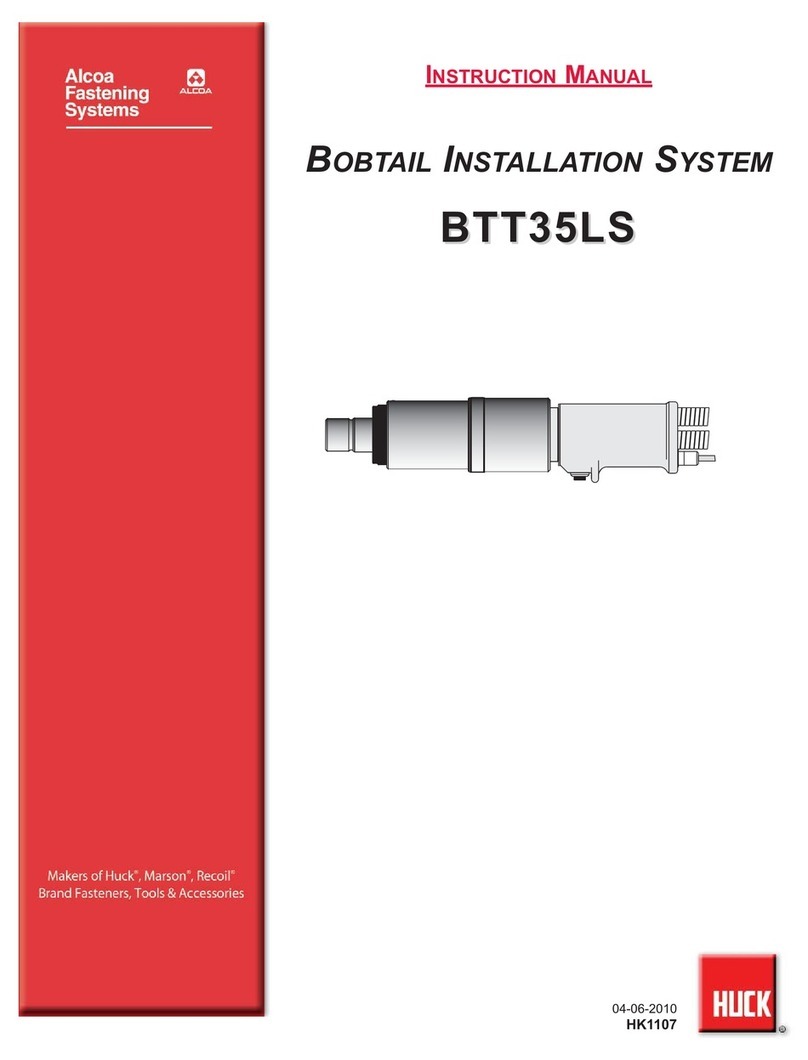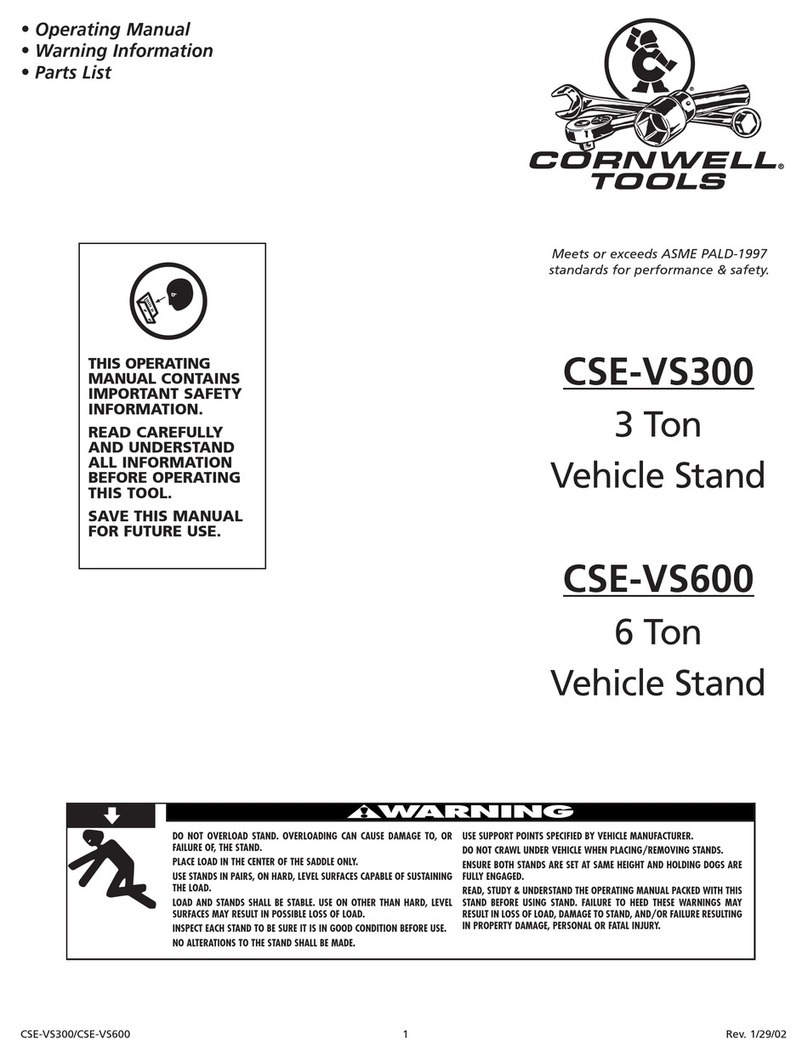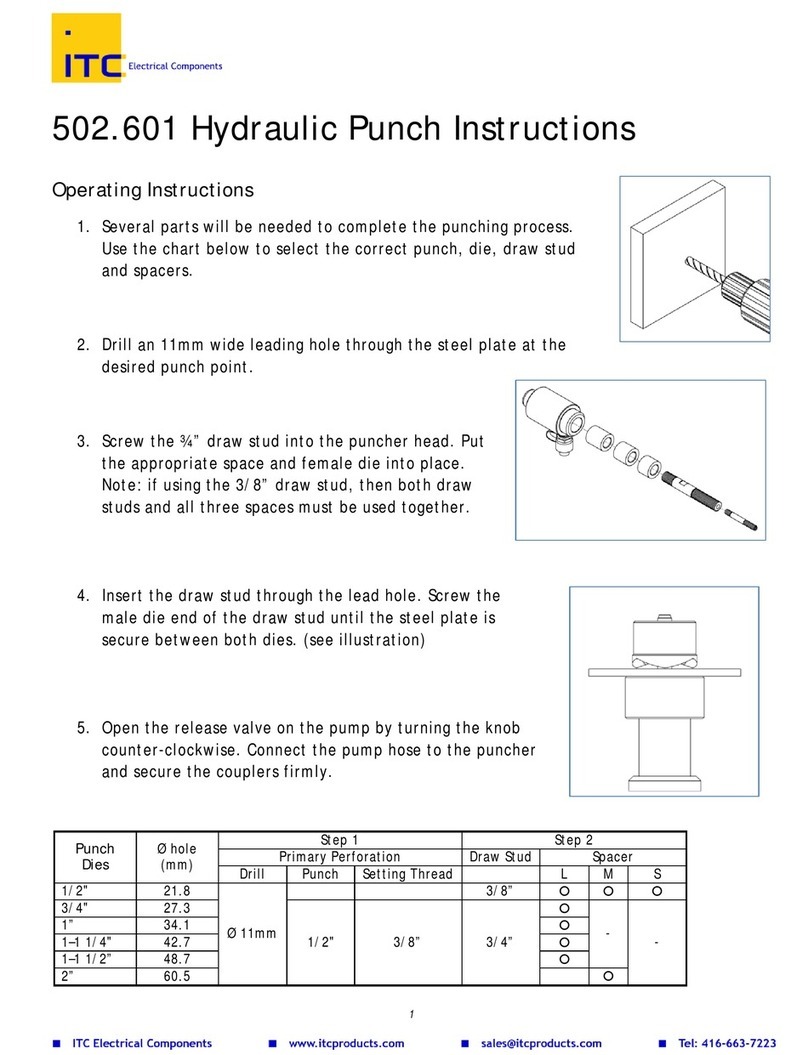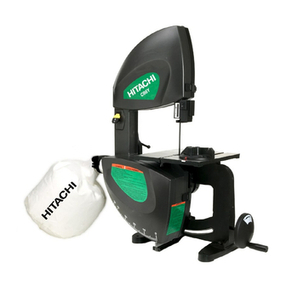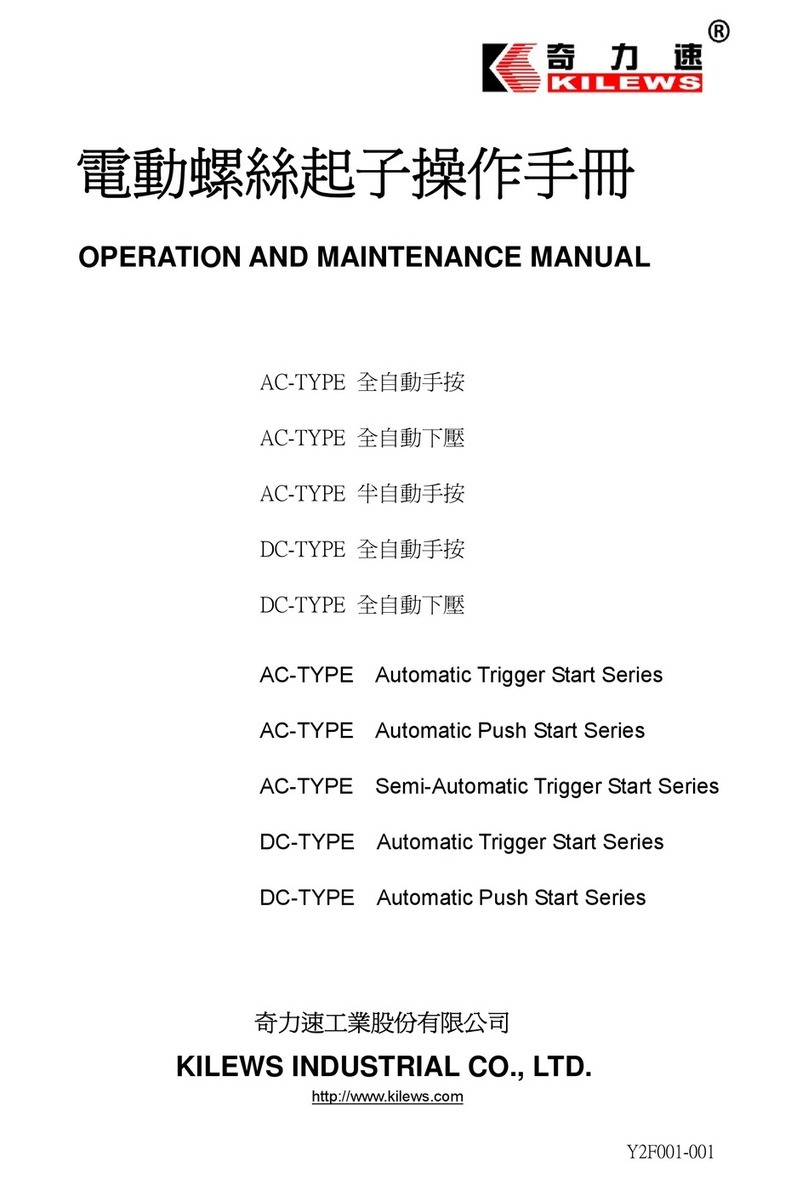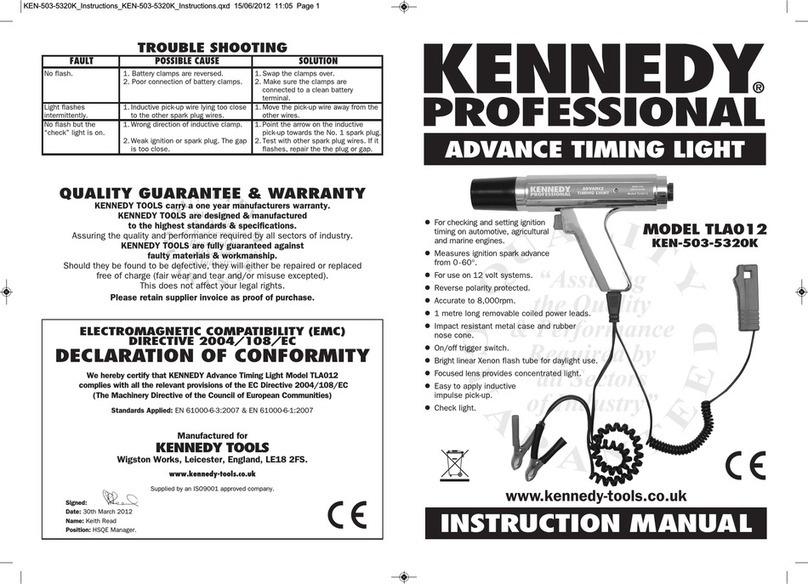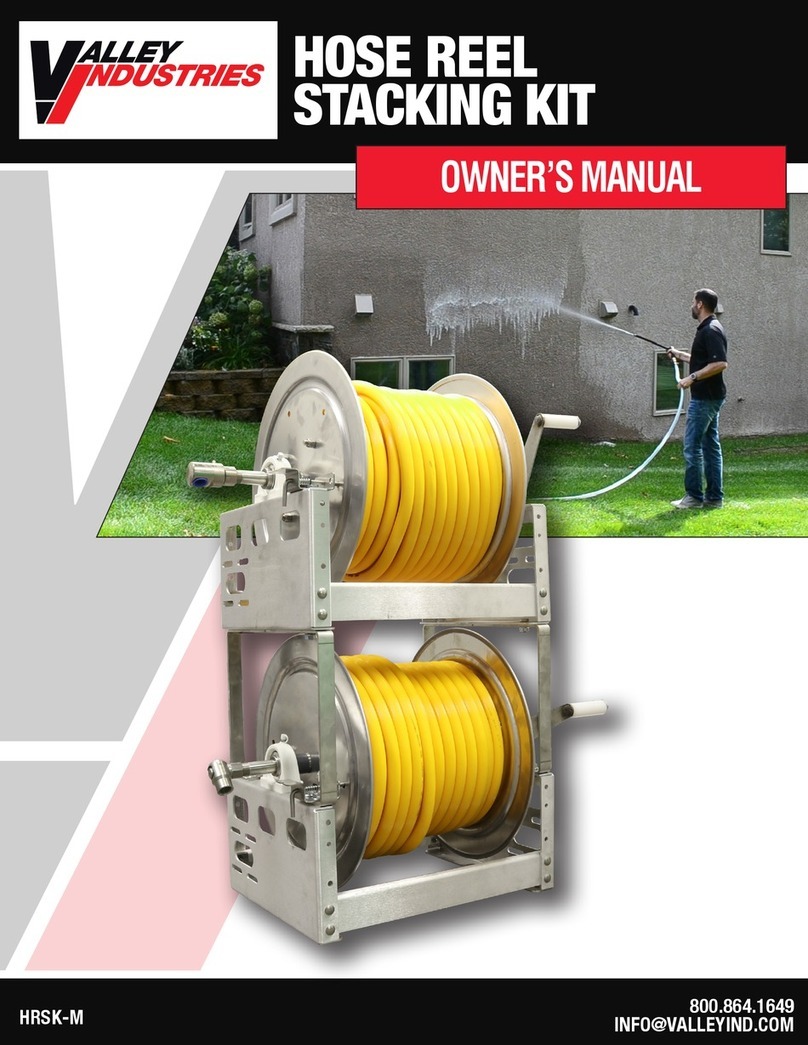AdirPro N User manual

Concrete
USER GUIDE
ADI709-01
Impact
Hammer

PRO QUALITY FOR THE
PROFESSIONAL.
AdirPro is known for its quality products in the construction industry, all
manufactured to the highest standards. We strive to help you complete
your project in the most reliable, safe, and cost-effective manner. We
deliver everything with accuracy you can count on so your team can
count on you.
Thank you
for your
purchase.

Table of Contents
1 Important Safety information
3 Measuring
18 Maintenance
24 Data
25 Limited Warranty
27 Disclaimer
28 Notes

1
Important Safety Information
GENERAL INFORMATION
Basic information
The concrete test hammer is designed according to state-of-
the-art technology and recognized safety regulations. Please
read through these operating instructions carefully upon initial
startup. They contain important information about safety, use
and maintenance of the concrete test hammer.
Designated Use
The concrete test hammer is a mechanical device used for
performing rapid, nondestructive quality testing on materials in
accordance with the customer’s specications; in most cases,
however, the material involved is concrete. The device is to be
used exclusively on the surfaces to be
tested and on the testing anvil.
Liability
Our “General Terms and Conditions of Sale and Delivery” apply
in all cases. Warranty and liability claims arising from personal
injury and damage to property cannot be upheld if they are due
to one or more of the following causes:
• Failure to use the concrete test hammer in accordance
with its designated use
• Incorrect performance check, operation and maintenance
of the concrete test hammer
• Failure to adhere to the sections of the operating
instructions dealing with the performance check,
operation and maintenance of the concrete test hammer
• Unauthorized structural modications to the concrete test
hammer
• Serious damage resulting form the effects of foreign
bodies, accidents, vandalism and acts of God.

2
Important Safety Information
SAFETY REGULATIONS
General Information
• Perform the prescribed maintenance work on schedule.
• Carry out a performance check once the maintenance
work has been completed.
• Handle and dispose of lubricants and cleaning agents
responsibly.
Unauthorized Operators
The concrete test hammer is not allowed to be operated by
children and anyone under the inuence of alcohol, drugs or
pharmaceutical prescriptions. Anyone who is not familiar with
the operating instructions must be supervised when using
the concrete test hammer.
Safety Icons
The following icons are used in conjunction with all important
safety notes in these operating instructions.
Standards and Regulations Applied
DANGER WARNING
This note indicates a risk of
serious or fatal injury should
certain rules of behavior be
disregarded.
This note warns you about the
risk of material damage, nancial
lossand legal penalties (e.g. loss of
warranty rights, liability cases, etc.)
• ISO/DIS 8045 International
• EN 12 504-2 Europe
• ENV 206 Europe
• BS 1881, part 202 Great Britain
• DIN 1048, part 2 Germany
• ASTM C 805 USA
• NFP 18-417 France
• B 15-225 Belgium
• JGJ/ T 23-2001 China
• JJG 817-1993 China

3
Measuring
MEASURING PRINCIPLE
The device measures the rebound value R. There is a Specic
relationship between this value and the hardness and strength
of the concrete.
The following factors must be taken into account when
ascertaining rebound values R:
• Impacting direction: horizontal, vertically upwards or
downwards
• Age of the concrete
• Size and shape of the comparison sample (cube, cylinder)
Models N and NR can be used for testing:
• Concrete items 100 mm or more in thickness
• Concrete with a maximum particle size ≤ 32mm
Models L and LR can be used for testing:
• Items with small dimensions (e.g. thin- walled items with a
thickness from 50 to 100mm)
IMPORTANT: If necessary, clamp the items to be tested prior
to measurement in order to prevent the material deecting.
• Items made from articial stone which are sensitive to
impacts.
IMPORTANT: Preferably perform measurements at
temperatures between 50ºF and 122ºF only.
MEASURING PROCEDURE
The items in (brackets) are illustrated in Figure4, on page 5.
Perform a few test impacts with the concrete test hammer on a
smooth, hard surface before taking any measurements which
you are going to evaluate.

4
• Use a grindstone to
smoothen the test surface.
(Figure 1)
Preparing the test surface
• Position the concrete test
hammer perpendicular to
the test surface.
• Deploy the impact plunger
(1) by pushing the concrete
test hammer towards the
test surface until the
push button springs out.
(Figure 2) Deploying the impact plunger (1) (model NR)
IMPORTANT: Each test surface should be tested with at least
10 impacts. The individual impact points must be spaced at
least 20mm apart.
Measuring
The device measures the rebound value R. There is a Specific relationship between this
value and the hardness and strength of the concrete.
The following factors must be taken into account when ascertaining rebound values R:
- Impacting direction: horizontal, vertically upwards or downwards
- Age of the concrete
- Size and shape of the comparison sample (cube, cylinder)
Models N and NR can be used for testing:
- Concrete items 100 mm or more in thickness
- Concrete with a maximum particle size
Models L and LR can be used for testing:
- Items with small dimensions (e.g. thin- walle
If necessary, clamp the items to be tested prior to measurement in order to
prevent the material deflecting.
- Items made from artificial stone which are sensitive to impacts.
!gninraW
The impact plunger (1) generates a recoil when it deploys. Always hold the
concrete test hammer in both hands!
The device measures the rebound value R. There is a Specific relationship between this
value and the hardness and strength of the concrete.
The following factors must be taken into account when ascertaining rebound values R:
- Impacting direction: horizontal, vertically upwards or downwards
- Age of the concrete
- Size and shape of the comparison sample (cube, cylinder)
Models N and NR can be used for testing:
- Concrete items 100 mm or more in thickness
- Concrete with a maximum particle size
Models L and LR can be used for testing:
- Items with small dimensions (e.g. thin- walle
If necessary, clamp the items to be tested prior to measurement in order to
prevent the material deflecting.
- Items made from artificial stone which are sensitive to impacts.
Danger!
Always hold the concrete test hammer in
to the test surface, before u trigger the impact!
Each test surface should be tested with at least 10 impacts. The individual
impact points must be spaced at least 20 mm apart.
WARNING
The impact plunger (1) generates a recoil when it deploys. Always
hold the concrete test hammer in both hands!
DANGER
Always hold the concrete test hammer in both hands, perpendicular
to the test surface, before you trigger the impact!

5
• Position the concrete test
hammer perpendicular to
and against the test surface.
Push the concrete test
hammer against the test
surface at moderate speed
until the impact is triggered
(a high beep acknowledges
registration).
• Repeat this procedure for the whole measurement series.
(Figure 3) Performing the test (illustration shows model NR)
• If you are using models N and L, press the pushbutton (6) to
lock the impact plunger (1) after every impact. Then read off
and note down the rebound value R indicated by the pointer
(4) on the scale (19).
• If you are using models NR and LR, the rebound value R
is automatically printed on the recording paper. It is only
necessary to lock the impact plunger (1) using the push
button (6) after the last impact.
(Figure 4) Reading the test result from the scale (19) on models
N and L
Measuring
The device measures the rebound value R. There is a Specific relationship between this
value and the hardness and strength of the concrete.
The following factors must be taken into account when ascertaining rebound values R:
- Impacting direction: horizontal, vertically upwards or downwards
- Age of the concrete
- Size and shape of the comparison sample (cube, cylinder)
Models N and NR can be used for testing:
- Concrete items 100 mm or more in thickness
- Concrete with a maximum particle size
Models L and LR can be used for testing:
- Items with small dimensions (e.g. thin- walle
If necessary, clamp the items to be tested prior to measurement in order to
prevent the material deflecting.
- Items made from artificial stone which are sensitive to impacts.
If you are using models N and L, press the pushbutton (6) to lock the impact plunger (1)
after every impact. Then read off and note down the rebound value R indicated by the
pointer (4) on the scale (19).
If you are using models NR and LR, the rebound value R is automatically printed on the
recording paper. It is only necessary to lock the impact plunger (1) using the push button
(6) after the last impact.
Impact Plunger
Rider with
Guide Rod
Plexiglass
Window
Push Button
(Complete)

6
OUTPUTTING AND EVALUATING DATA
Output
Models N and L:
After every impact, the rebound value R is displayed by the
pointer (4) on the scale of the device.
Models NR and LR:
The rebound value R is automatically registered on the
recording paper.
It is possible to record about 4000 test impacts on each roll.
Evaluation
Take the average of the 8 – 10 rebound values R which you
have measured.
IMPORTANT: Do not include values which are too high or too
low (the lowest and highest values) in your calculation of the
average value.
• Determine which conversion curve is appropriate for the
selected body shape (see Figure 5 to Figure 10, on pages
8-13)Then, using the average rebound value Rm and the
selected conversion curve, read off the average compressive
strength.
IMPORTANT: Note the impact direction!
The average compressive strength is subject to a dispersion (±
4.5 N/mm² to ±8 N/mm²).
Measuring

7
CONVERSION CURVES
Derivation of the conversion Curves
The conversion curves (Figure 5, to Figure 10) for the concrete
test hammer are based on measurements taken on very many
sample cubes. The rebound values R of the sample cubes
were measured using the concrete test hammer. Then the
compressive strength was ascertained on a pressure testing
machine. In each test, at least 10 test hammer impacts were
performed on one side of the test cube which was lightly
clamped on the press.
Validity of the Conversion Curves
• Standard concrete made from Portland or bleat furnace slag
cement with sand gravel (maximum particle size dia. ≤ 32 mm)
• Smooth, dry surface
• Age: 14 – 56 days
Empirical values:
The conversion curve is practically independent of the:
• Cement content of the concrete
• Particle graduation,
• Diameter of the largest particle in the ne gravel mixture,
providing the diameter of the maximum
• Water/cement ratio
Measuring

8
Conversion Curves, Concrete Test Hammer Model N/NR
Concrete pressure resistance of a cylinder after 14 – 56 days
(Figure 5) Model N/NR: Conversion curves based on the
average compressive strength of a cylinder and the rebound
value of R
fckcyl.m: Average pressure resistance of a cylinder (probable
value)
IMPORTANT: The concrete test hammers shown in Figure 5
and Figure 6 indicates the impact direction.
Measuring

9
Conversion Curves, Concrete Test Hammer Model L/LR
Concrete pressure resistance of a cylinder after 14 – 56 days
(Figure 6) Model L/LR: Conversion based on the average
pressure resistance of a cylinder and the rebound value R
Limits of Dispersion
fckcyl: The max. and min. values are set so 80% of all test
results are included.
Measuring

10
Conversion Curves, Concrete Test Hammer Model N/NR
Concrete pressure resistance of a cube after 14 – 56 days
(Figure 7) Model N/NR: Conversion curves based on the
average compressive strength of a cube and the rebound
value of R
fckcube.m: Average pressure resistance of a cube (probable
value)
IMPORTANT: The concrete test hammers shown in Figure 7
and Figure 8 indicates the impact direction.
Measuring

11
Conversion Curves, Concrete Test Hammer Model L/LR
Concrete pressure resistance of a cube after 14 – 56 days
(Figure 8) Model L/LR: Conversion based on the average com-
pressive strength of a cube and the rebound value R
Limits of Dispersion
fckcube: The max. and min. values are set so 80% of all test
results are included.
Measuring

12
Conversion Curves, Concrete Test Hammer Model N/NR
Concrete pressure resistance of a cylinder after 14 – 56 days
(Figure 9) Model N/NR: Conversion curves based on the
average compressive strength of a cylinder and the rebound
value of R
fckcyl.m: Average pressure resistance of a cylinder (probable
value).
IMPORTANT: The concrete test hammers shown in Figure 9
and Figure 10 indicates the impact direction.
Measuring

13
Conversion Curves, Concrete Test Hammer Model L/LR
Concrete pressure resistance of a cylinder after 14 – 56 days
(Figure 10) Model L/LR: Conversion based on the average
compressive strength of a cylinder and the rebound value R
Limits of Dispersion
fckcyl: The max. and min. values are set so 80% of all test
results are included.
Measuring

14
Measuring
FACTORS AFFECTING THE VALUES
Direction of impact
The measured rebound value R is dependent on the impact
direction.
Shape coefcient
The compressive strength measured in a pressure Testing ma-
chine depends on the shape and size of the sample.
IMPORTANT: The samples prescribed for use in the Particular
country must be taken into account when converting the re-
bound value R into Compressive strength.
In the conversion curves on page 8 to page 17, the Values for
compressive strength are specied for cylinders (Ø 150 × 300
mm or Ø 6” × 12”) and for cubes (length of side 15cm). The
following shape coefcients are familiar from the literature:
Cube 150mm 200mm 300mm
Shape
coefcient
1.00
1.25
0.95
1.19
0.85
1.06
Cylinder Ø150×300mm
Ø6”×12”
Ø100×200mm Ø100×200mm
Shape
coefcient
0.80
1.00
0.85
1.06
0.95
1.19
Drill core Ø50×56mm Ø100×100mm Ø150×150mm
Shape
coefcient
1.04
1.30
1.02
1.28
1.00
1.25

15
Measuring
Example: A cube with a length of side of 200 mm is used for the
determination of the compressive strength with the pressure
testing machine. In this case the strength values shown in the
conversion curves in Figure 9 and Figure 10 on pages 12-13 (for
cylinders Ø 6”×12”) must be multiplied by the shape coefcient
of 1.19.
Time coefcient
The age of the concrete and its carbonate penetration depth
can signicantly increase the measured rebound values R.
It is possible to obtain accurate values for the effective strength
by removing the hard, carbonate-impregnated surface layer
using a manual grinding machine over a surface area of
about Ø 120 mm and performing the measurement on the
non-carbonate-impregnated concrete. The time coefcient,
i.e. the amount of the increased rebound values R, can be
obtained by taking additional measurements on the
carbonate-impregnated surface.
Rm carb.: Average rebound value R, measured on carbonate-
impregnated concrete surface.
Rm n.c.: Average rebound value R, measured on non-
carbonate-impregnated concrete surface (Factor on the base of
the Chinese standard JGJ/T23-2001, see our special info leaet).
Time coeff. Zf= Rm n.c =
Rm carb Rm carb
Rm n.c Zf

16
Measuring
Special Cases
Experience has shown that deviations from the normal
conversion curves occur under the following circumstances:
• Articial stone products with an unusual concrete
composition and small dimensions. It is recommended that a
separate series of tests should be performed for each product
in order to determine the relationship between the rebound
value R and the compressive strength.
• Aggregates made from low strength, lightweight or cleavable
stone (e.g. pumice, brick rubble, gneiss) result in a strength
value lower than shown on the conversion curve.
• Gravel with extremely smooth, polished surfaces and a
spherical shape results in values for compressive strength
which are lower than those ascertained by the rebound
measurements.
• A strong, dry mixed concrete (i.e. with low sand content) which
has not been placed adequately processed may contain
lumps of gravel which are not visible from the surface. These
affect the strength of the concrete without however inuencing
the rebound values R.
• The concrete test hammer gives inadequate rebound values
R on concrete from which the form has just been removed,
which is wet or which has hardened under water. The concrete
must be dried before the test.
• Very high values for compressive strength (> 70 N/mm²) can
be achieved by adding pulverized fuel ash or silica fume.
However, these strengths cannot reliably be ascertained using
the rebound value R measured by the concrete teat hammer.

17
Measuring
Conversion Curves for Special Cases
The recommended course in special cases is to prepare a
separate conversion curve.
• Clamp the sample in a pressure testing machine and apply a
preload of about 40kN vertically to the direction in which the
concrete had been poured in.
• Measure the rebound hardness by applying as many test
impacts as possible to the sides.
The only way to achieve a meaningful result is to measure
the rebound values R and the compressive Strength of several
samples.
IMPORTANT: Concrete is a very inhomogeneous material.
Sample made from the same batch of concrete and stored
together can reveal discrepancies of ±15% when tested in the
pressure testing machine.
• Discard the lowest and highest values and calculate the
average Rm.
• Determine the compressive strength of the sample using
the pressure testing machine and ascertain the average value
fckm. The pair of values Rm/ fckm applies to a certain range
of the measured rebound value R.
It is necessary to test samples of differing qualities and/or ages
in order to prepare a new conversion curve for the entire range
of rebound values from R=20 to R=55.
• Determine the curve with the pairs of values Rm/ fckm
(e.g. EXCEL in the RGP function).
This manual suits for next models
7
Table of contents
Popular Tools manuals by other brands
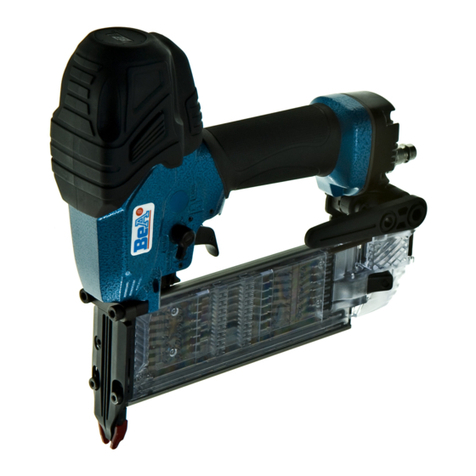
BEA
BEA SK 355-212E Spare parts list/service instructions
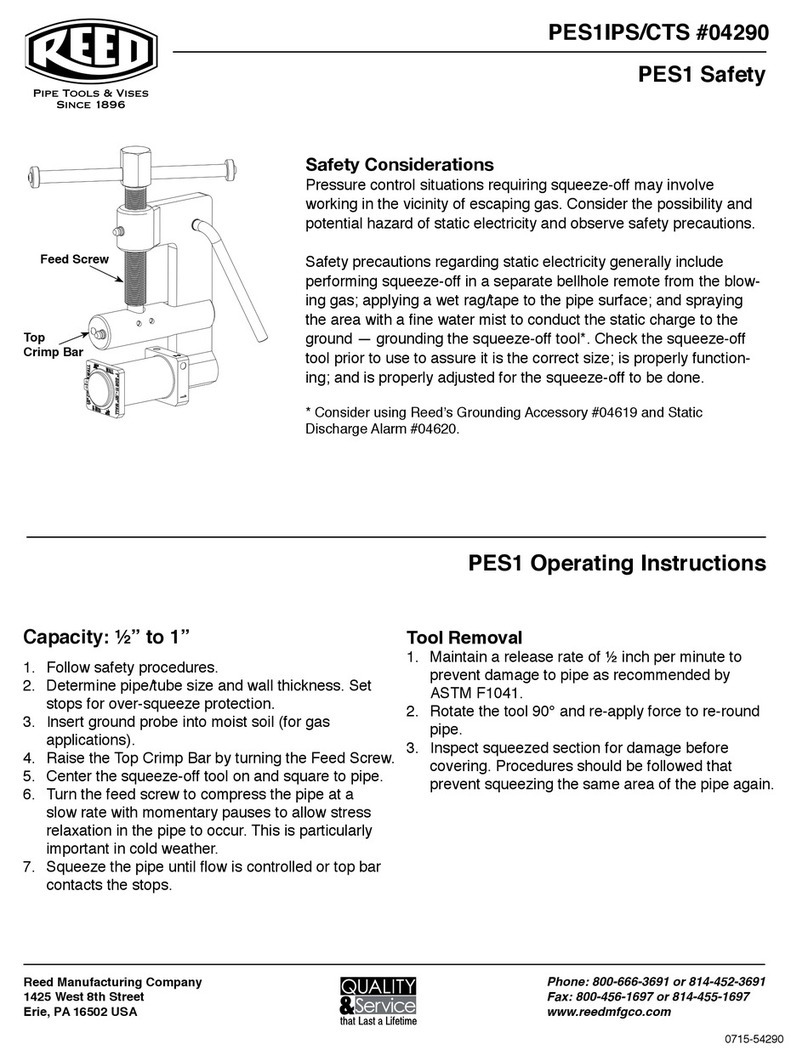
REED
REED PES1IPS operating instructions
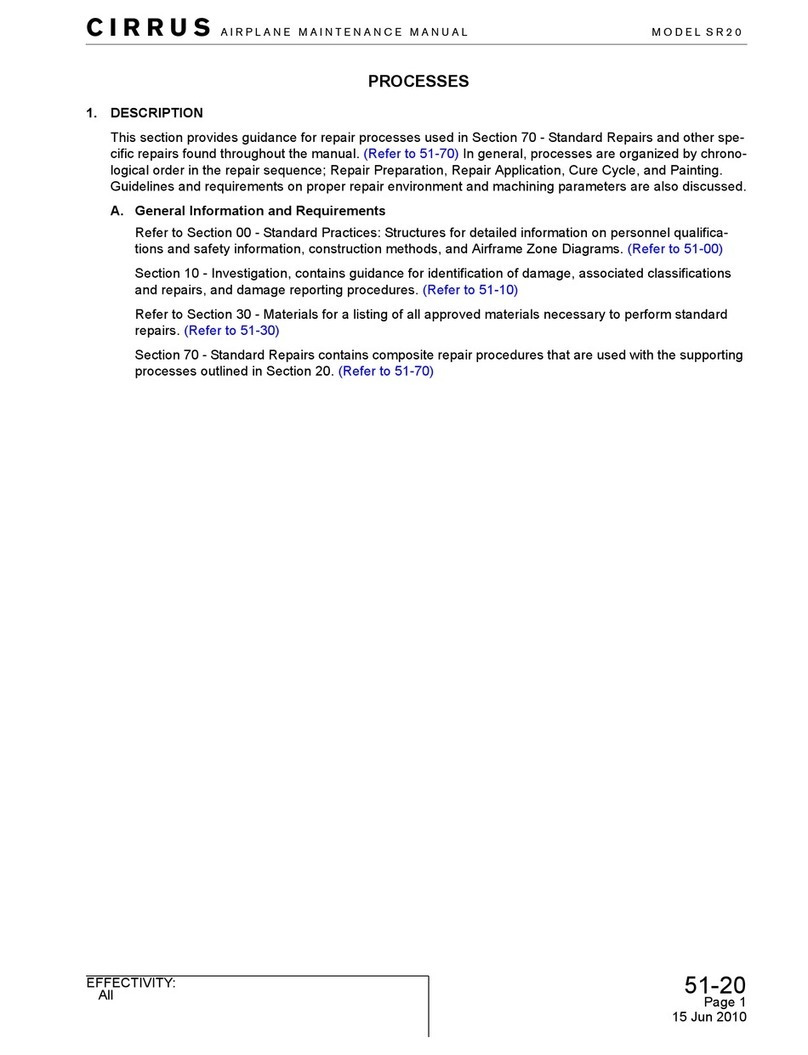
Cirrus
Cirrus SR20 2010 Maintenance manual

Parkside
Parkside PSS 65 C1 Translation of the original instruction
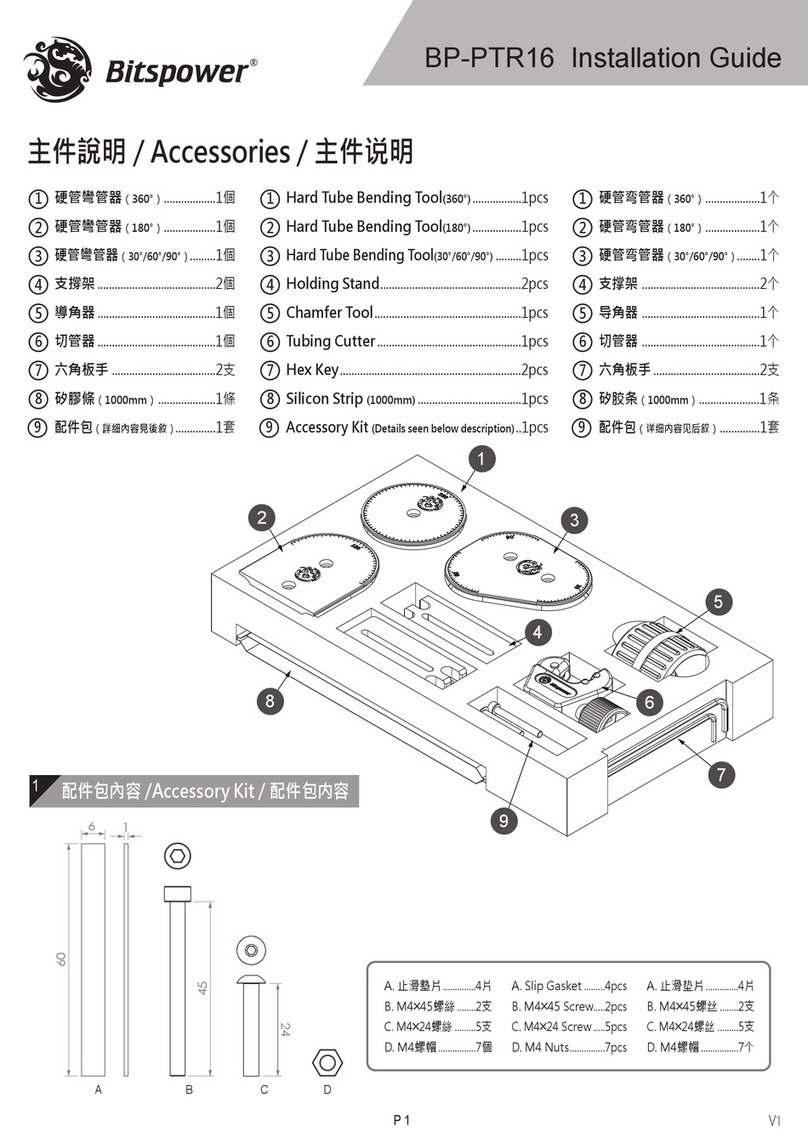
Bitspower
Bitspower BP-PTR16 installation guide
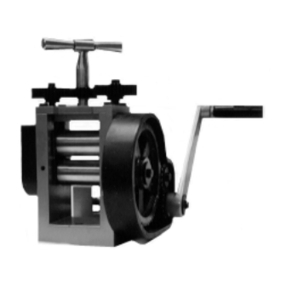
Harbor Freight Tools
Harbor Freight Tools CEN-TECH 2458 Assembly and operating instructions
